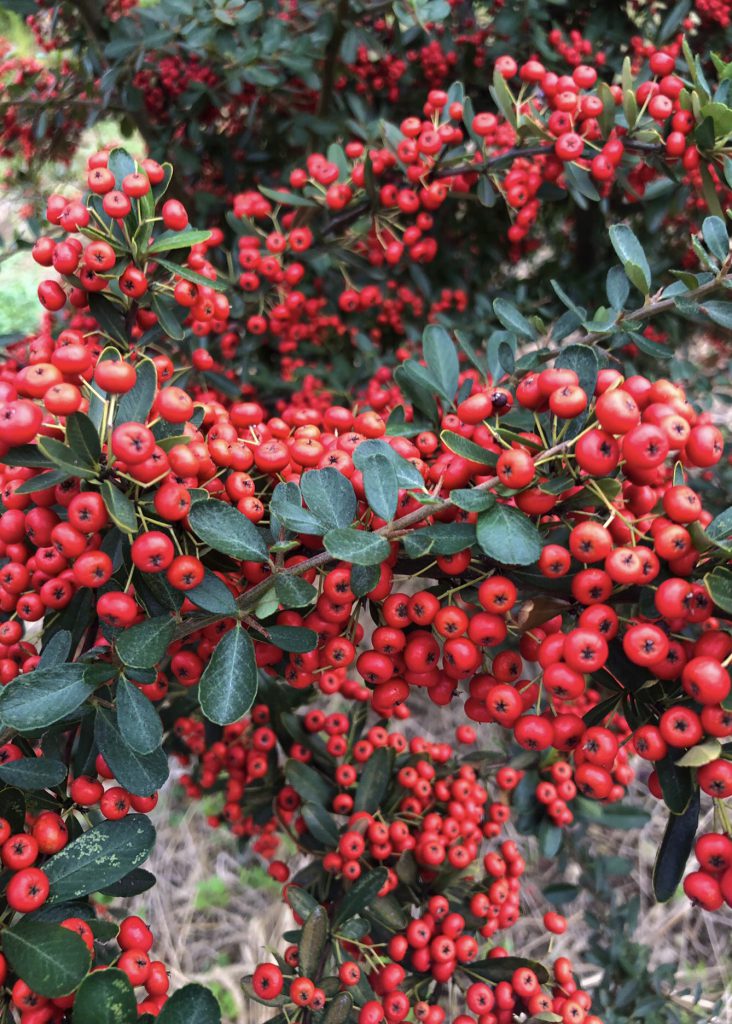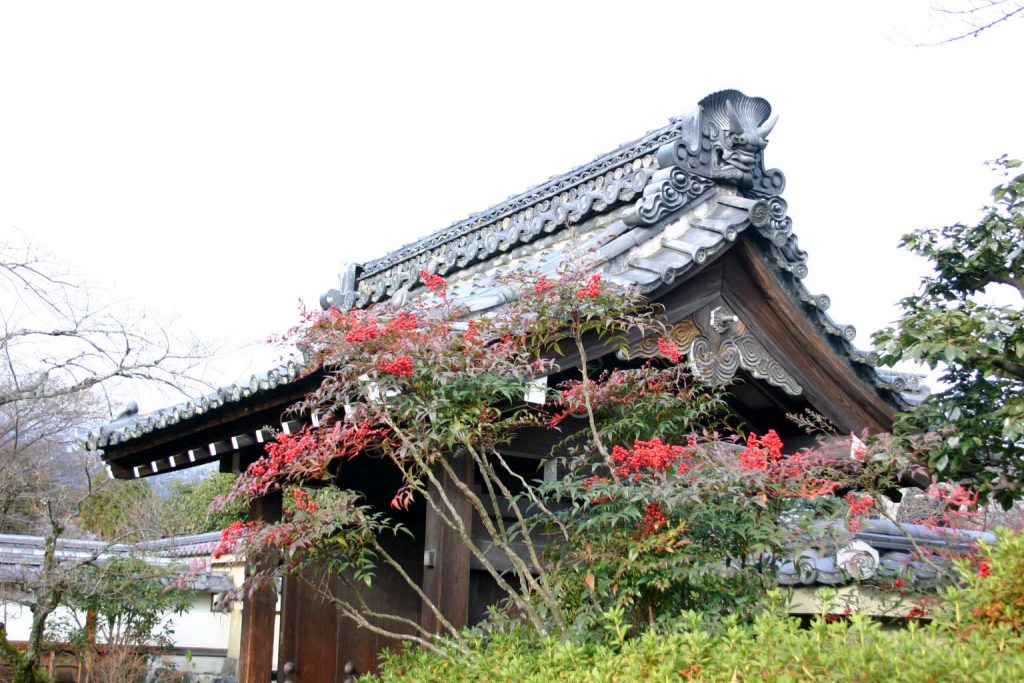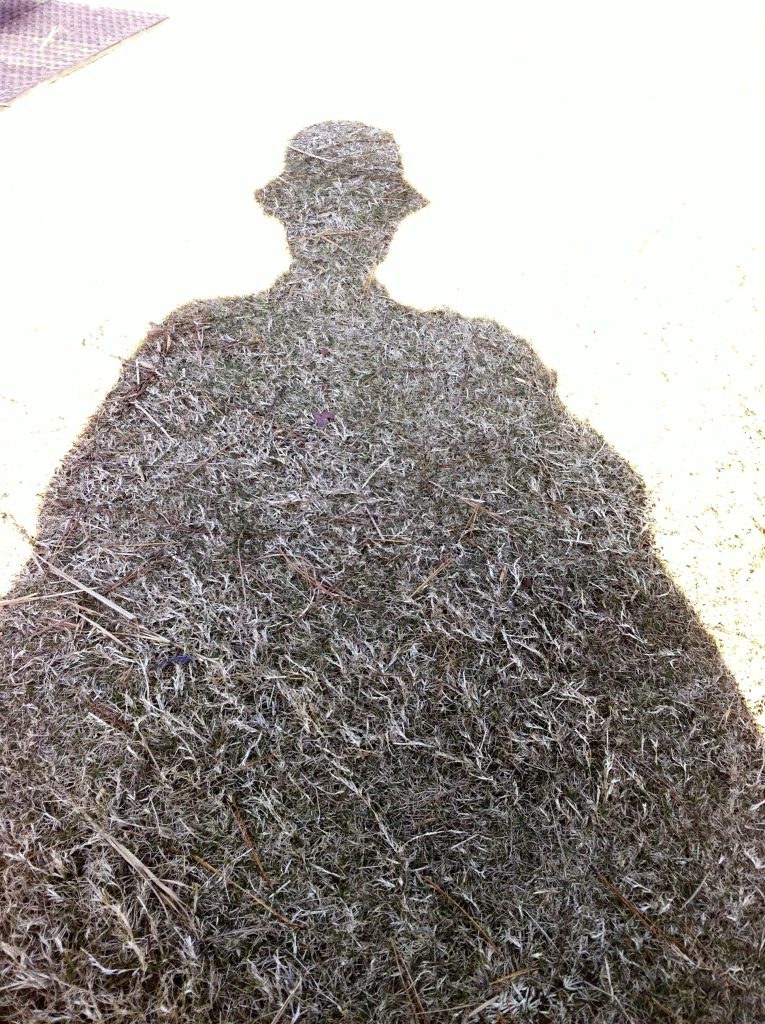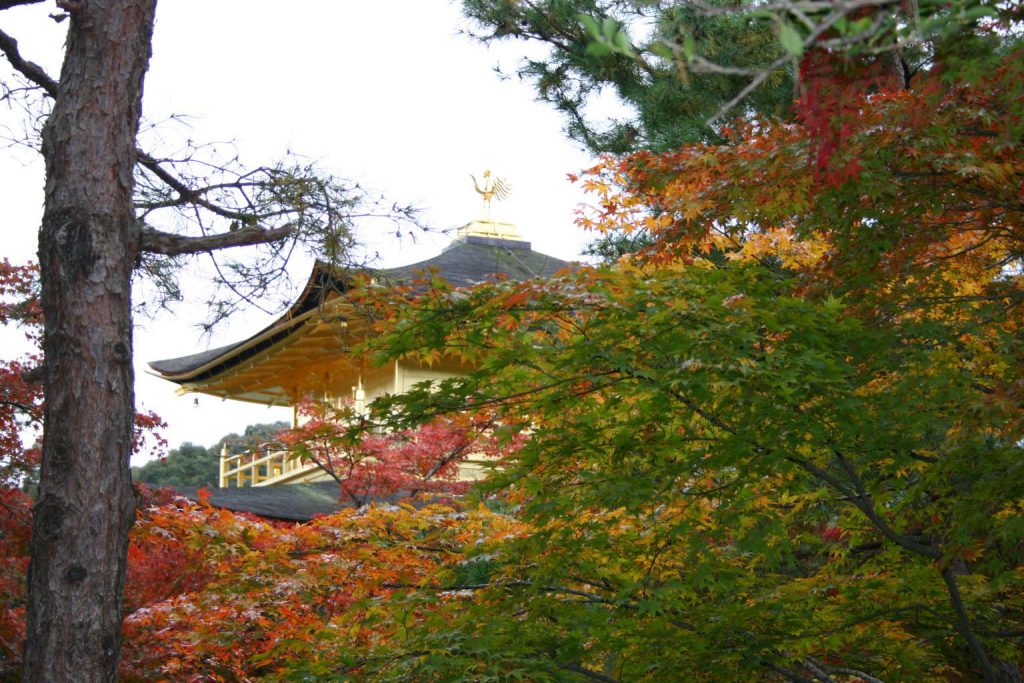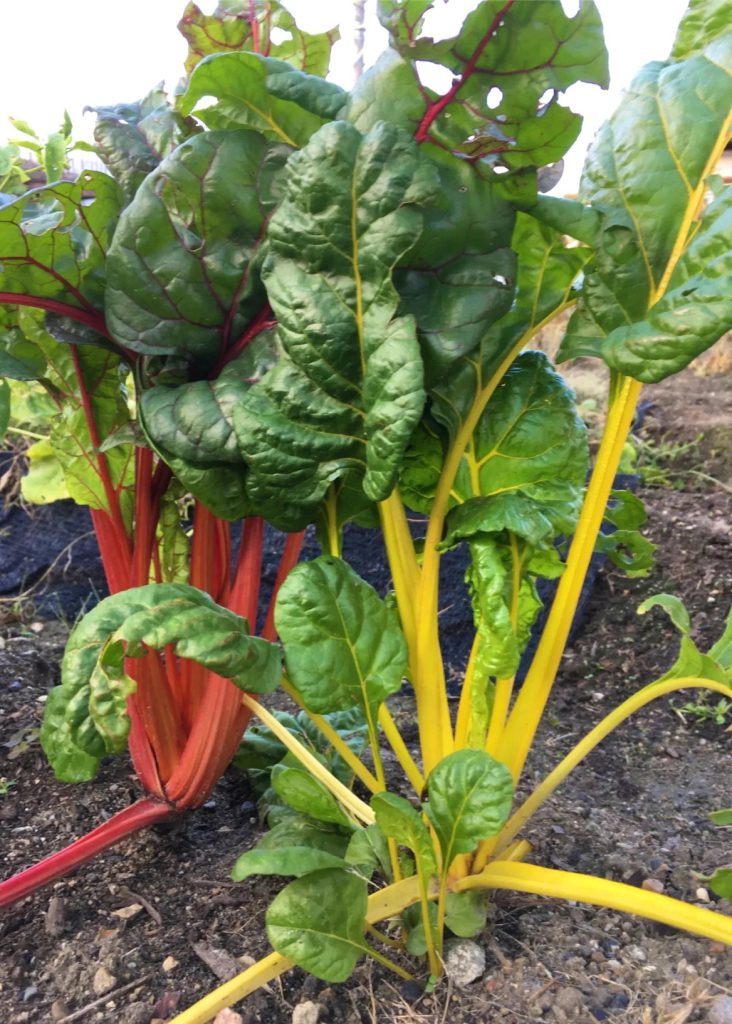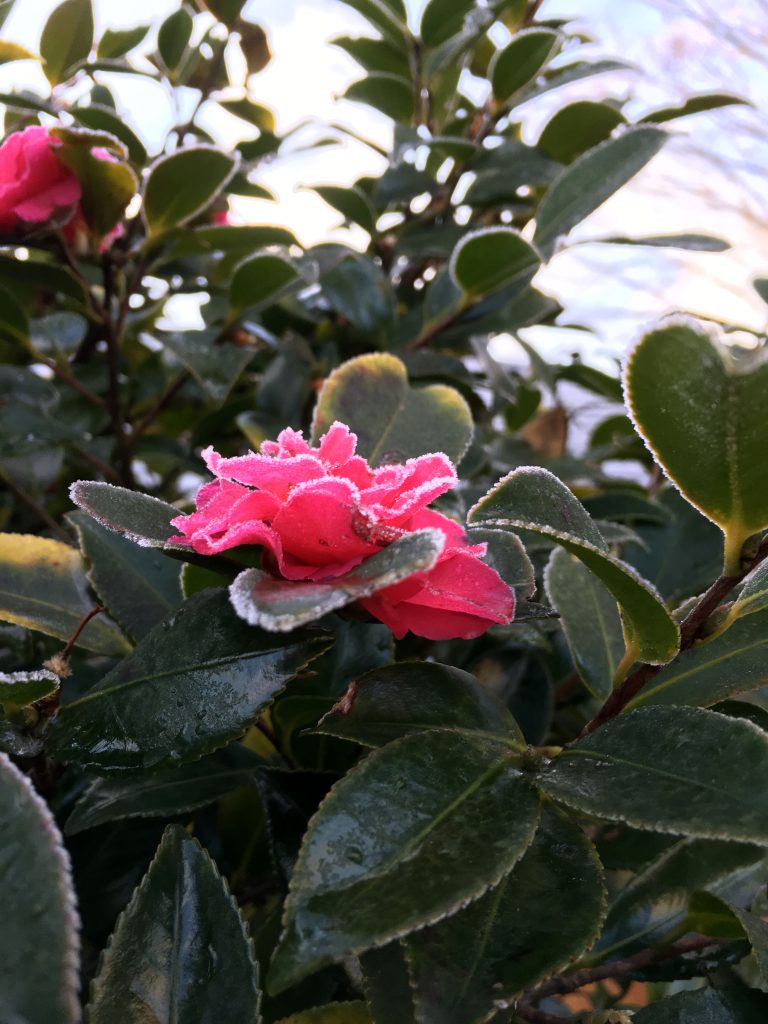
On the last day of November, I receive news of the first snow and the first frost from all over the country. Even in Osaka, when you enter the mountains, the fields are frosty. The sasanqua flowers that have begun to bloom also have a white frost border, and look like a lady wearing frills. Sasanqua is so familiar that it is sung as “Sasanqua, Sasanqua, Blooming Road” even in nursery rhymes. Originally from Japan, it was introduced to Europe from Dejima in Nagasaki during the Edo period, and its Japanese name became the scientific name (Camellia sasanqua). It will continue to bloom all winter, and it will be soothing to you from time to time.
11月も最後の日、全国から初雪、初霜の便りが届きます。大阪でも山間部に入ると田畑にも霜が降りています。咲き始めた山茶花にも霜の白い縁取りがされていて、フリルを纏った貴婦人の様です。童謡でも「さざんか さざんか 咲いた道」と歌われているほど山茶花は身近な花です。日本原産で、江戸時代に長崎の出島からヨーロッパに伝わり、和名がそのまま学名(Camellia sasanqua)になった植物です。この冬中咲き続けて、折に触れ目にし、心を和ませてくれることでしょう。


